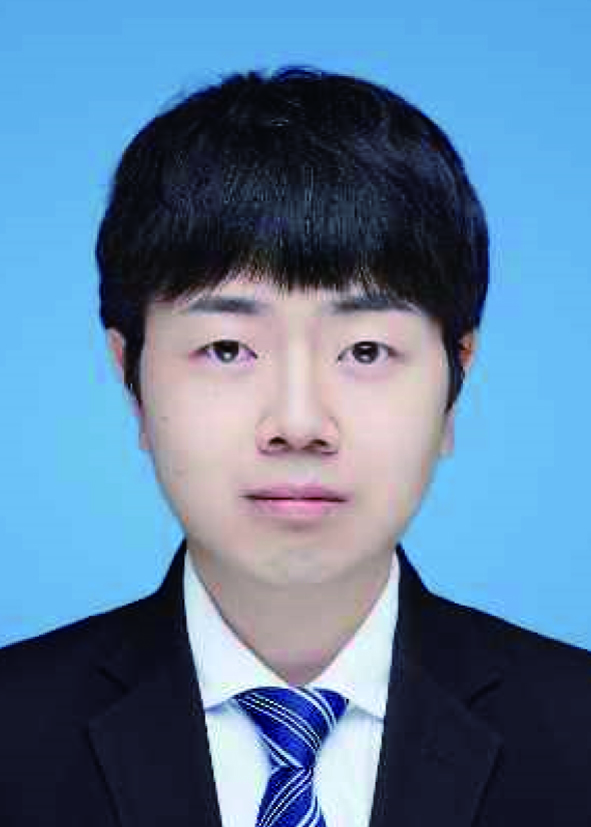| Citation: |
Wenhao Ran, Zhuoran Wang, Guozhen Shen. Artificial hawk-eye camera for foveated, tetrachromatic, and dynamic vision[J]. Journal of Semiconductors, 2024, 45(9): 090401. doi: 10.1088/1674-4926/24060010
****
W H Ran, Z R Wang, and G Z Shen, Artificial hawk-eye camera for foveated, tetrachromatic, and dynamic vision[J]. J. Semicond., 2024, 45(9), 090401 doi: 10.1088/1674-4926/24060010
|
Artificial hawk-eye camera for foveated, tetrachromatic, and dynamic vision
DOI: 10.1088/1674-4926/24060010
More Information
-
References
[1] Gu L L, Poddar S, Lin Y J, et al. A biomimetic eye with a hemispherical perovskite nanowire array retina. Nature, 2020, 581, 278 doi: 10.1038/s41586-020-2285-x[2] Song Y M, Xie Y Z, Malyarchuk V, et al. Digital cameras with designs inspired by the arthropod eye. Nature, 2013, 497, 95 doi: 10.1038/nature12083[3] Ko H C, Stoykovich M P, Song J Z, et al. A hemispherical electronic eye camera based on compressible silicon optoelectronics. Nature, 2008, 454, 748 doi: 10.1038/nature07113[4] Zhang Z H, Wang S Y, Liu C S, et al. All-in-one two-dimensional retinomorphic hardware device for motion detection and recognition. Nat Nanotechnol, 2022, 17, 27 doi: 10.1038/s41565-021-01003-1[5] Park J, Kim M S, Kim J, et al. Avian eye–inspired perovskite artificial vision system for foveated and multispectral imaging. Sci Robot, 2024, 9, eadk6903 doi: 10.1126/scirobotics.adk6903[6] Choi C, Choi M K, Liu S Y, et al. Human eye-inspired soft optoelectronic device using high-density MoS2-graphene curved image sensor array. Nat Commun, 2017, 8, 1664 doi: 10.1038/s41467-017-01824-6[7] Kim M S, Lee G J, Choi C, et al. An aquatic-vision-inspired camera based on a monocentric lens and a silicon nanorod photodiode array. Nature Electronics, 2020, 3, 546 doi: 10.1038/s41928-020-0429-5[8] Wang Y, Gong Y, Huang S M, et al. Memristor-based biomimetic compound eye for real-time collision detection. Nat Commun, 2021, 12, 5979 doi: 10.1038/s41467-021-26314-8[9] Jayachandran D, Pendurthi R, Sadaf M U K, et al. Three-dimensional integration of two-dimensional field-effect transistors. Nature, 2024, 625, 276 doi: 10.1038/s41586-023-06860-5[10] Kang J H, Shin H, Kim K S, et al. Monolithic 3D integration of 2D materials-based electronics towards ultimate edge computing solutions. Nat Mater, 2023, 22, 1470 doi: 10.1038/s41563-023-01704-z[11] Hua Q L, Shen G Z. Low-dimensional nanostructures for monolithic 3D-integrated flexible and stretchable electronics. Chem Soc Rev, 2024, 53, 1316 doi: 10.1039/D3CS00918A -
Proportional views





 Wenhao Ran received his PhD in the Institute of Semiconductors, Chinese Academy of Sciences in 2022. He is currently a postdoctoral researcher at the School of Integrated Circuits and Electronics, Beijing Institute of Technology, Beijing. His current research focuses on flexible biomimic vision system with in-memory sensing and computing.
Wenhao Ran received his PhD in the Institute of Semiconductors, Chinese Academy of Sciences in 2022. He is currently a postdoctoral researcher at the School of Integrated Circuits and Electronics, Beijing Institute of Technology, Beijing. His current research focuses on flexible biomimic vision system with in-memory sensing and computing. Zhuoran Wang received his PhD in the department of Mining and Materials Engineering from the McGill University, QC, Canada in 2017. In 2019 he joined the Institute of Photonic Sciences (ICFO), Barcelona, as a postdoctoral /Marie-Curie research fellow. He is currently a professor at the School of Integrated Circuits and Electronics, Beijing Institute of Technology, Beijing. His current research focuses on flexible and infrared optoelectronic sensors for biomimic vision.
Zhuoran Wang received his PhD in the department of Mining and Materials Engineering from the McGill University, QC, Canada in 2017. In 2019 he joined the Institute of Photonic Sciences (ICFO), Barcelona, as a postdoctoral /Marie-Curie research fellow. He is currently a professor at the School of Integrated Circuits and Electronics, Beijing Institute of Technology, Beijing. His current research focuses on flexible and infrared optoelectronic sensors for biomimic vision. Guozhen Shen received his PhD degree in Chemistry from the University of Science and Technology of China. He is currently a professor at the School of Integrated Circuits and Electronics, Beijing Institute of Technology (BIT), and the director of the Institute of Flexible Electronics and Intelligent Manufacturing. Before joining BIT, he worked at Hanyang University (Korea), National Institute for Materials Science (Japan), University of Southern California (US), and Huazhong University of Science and Technology (China), the Institute of Semiconductors, CAS (China). His current research focuses on flexible electronic devices for artificial intelligence and healthcare monitoring.
Guozhen Shen received his PhD degree in Chemistry from the University of Science and Technology of China. He is currently a professor at the School of Integrated Circuits and Electronics, Beijing Institute of Technology (BIT), and the director of the Institute of Flexible Electronics and Intelligent Manufacturing. Before joining BIT, he worked at Hanyang University (Korea), National Institute for Materials Science (Japan), University of Southern California (US), and Huazhong University of Science and Technology (China), the Institute of Semiconductors, CAS (China). His current research focuses on flexible electronic devices for artificial intelligence and healthcare monitoring.
 DownLoad:
DownLoad:














